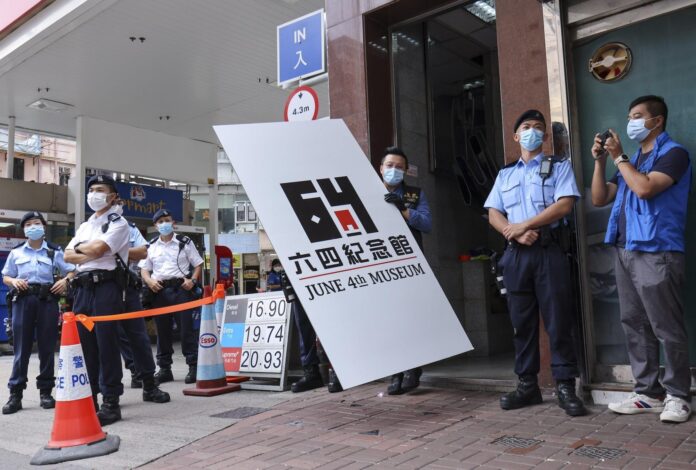The June 4th Memorial Museum, an institution dedicated to the 1989 Tiananmen Square Massacre, has opened in Midtown Manhattan. The museum held an opening reception on 2 June, just before the 34-year anniversary of the massacre. Though a similar museum once operated in Hong Kong, it was forcibly closed by the city’s authorities in 2021, making the New York City exhibition space currently the only such museum of its kind.
A number of people who took part in the founding of the museum were directly involved in the 1989 protests, including Wang Dan, who was at one point number one on Beijing authorities’ list of most wanted students, and Zhou Fensou, a former Tiananmen student leader who was once fifth on the same list.
Chinese authorities have long made it difficult to commemorate the massacre, and even in Hong Kong—previously the only place in China where residents held large, public tributes to those lost in the event—crackdowns have increased and public commemorations have largely gone private. This has been exacerbated by the passing of the 2020 National Security Law, which has seen the removal of public statues related to the massacre as well the removal of related books and documentaries from the shelves of public libraries.
“There is nothing Hong Kong can do any more about China’s democracy and freedom. Its hands are tied,” Wang told the South China Morning Post. He added that Hong Kong’s role and power in the fight to advance democracy on mainland China has waned in the face of new laws. He also said the June 4th Memorial Museum’s location in New York situated it in a location that has more Chinese residents than any other American city and is a popular destination for tourists from the mainland. In the SCMP interview, he added that the museum “hope(s) to work with high schools in New York so the pupils can visit the museum when they learn about China and have a better understanding of the country’s history”.
Housed on the fourth floor of an office building at 894 Sixth Avenue in Herald Square, the 2,000 sq. ft exhibition space features a collection of relics from the event, such as bloodstained clothing, letters written to imprisoned protestors (including one written to Wang by Liu Xiabo, who would go on to win the Nobel Peace Prize), leaflets, newspaper clippings and more.
“It is a privilege to be the protector of such sacred memory, the sacred fire for freedom,” Zhou Fensou told The New York Times; a number of items in the exhibition had once belonged to friends of his. David Yu, executive director of the group that organised the exhibition, told The Times, “We’re much more than a museum, more than any museum, because this is a symbol of defiance.”
The organisers hope to eventually turn the display into a full-scale museum; they have thus far raised roughly $500,000 towards the effort, with an ultimate goal of $2m.

























